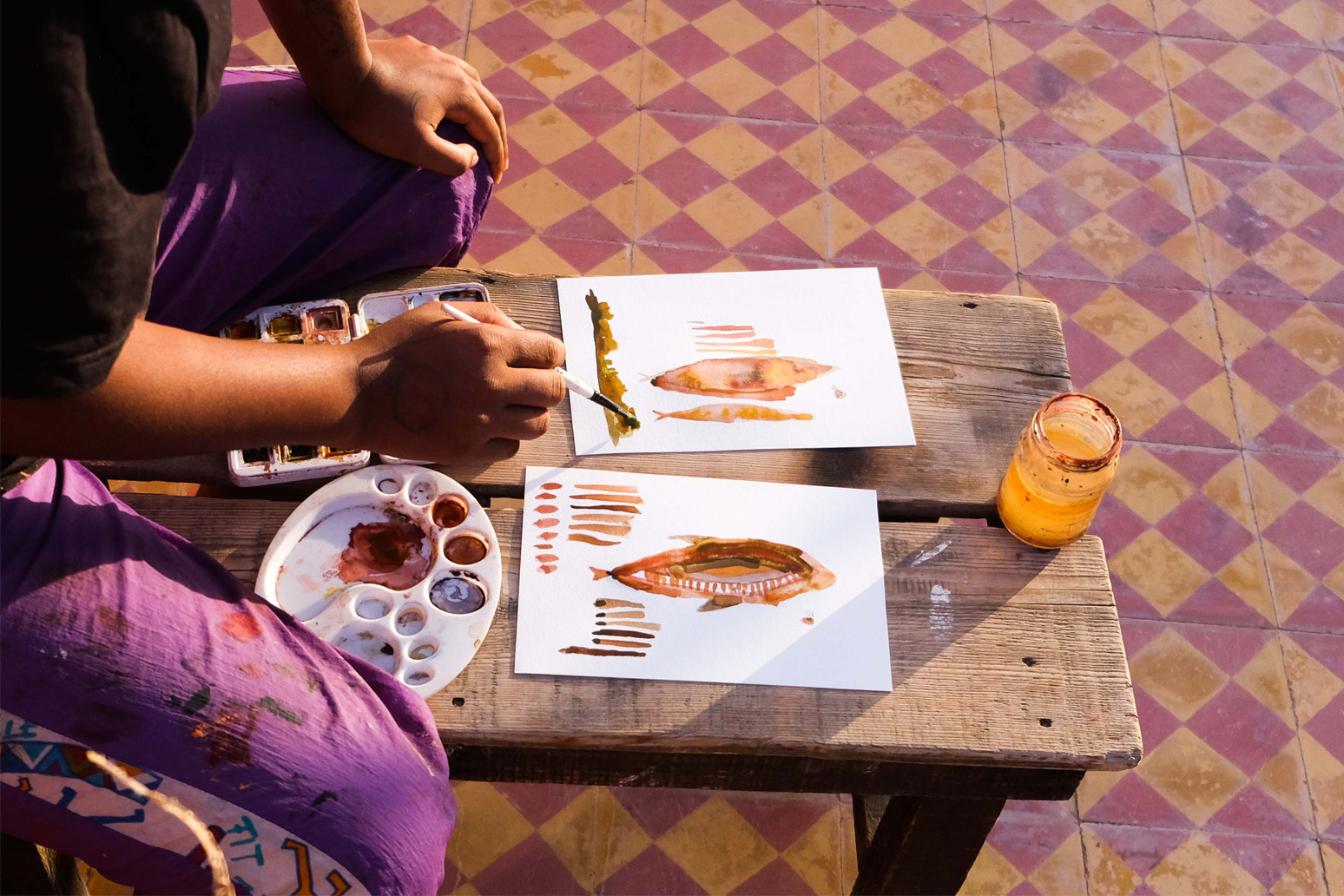
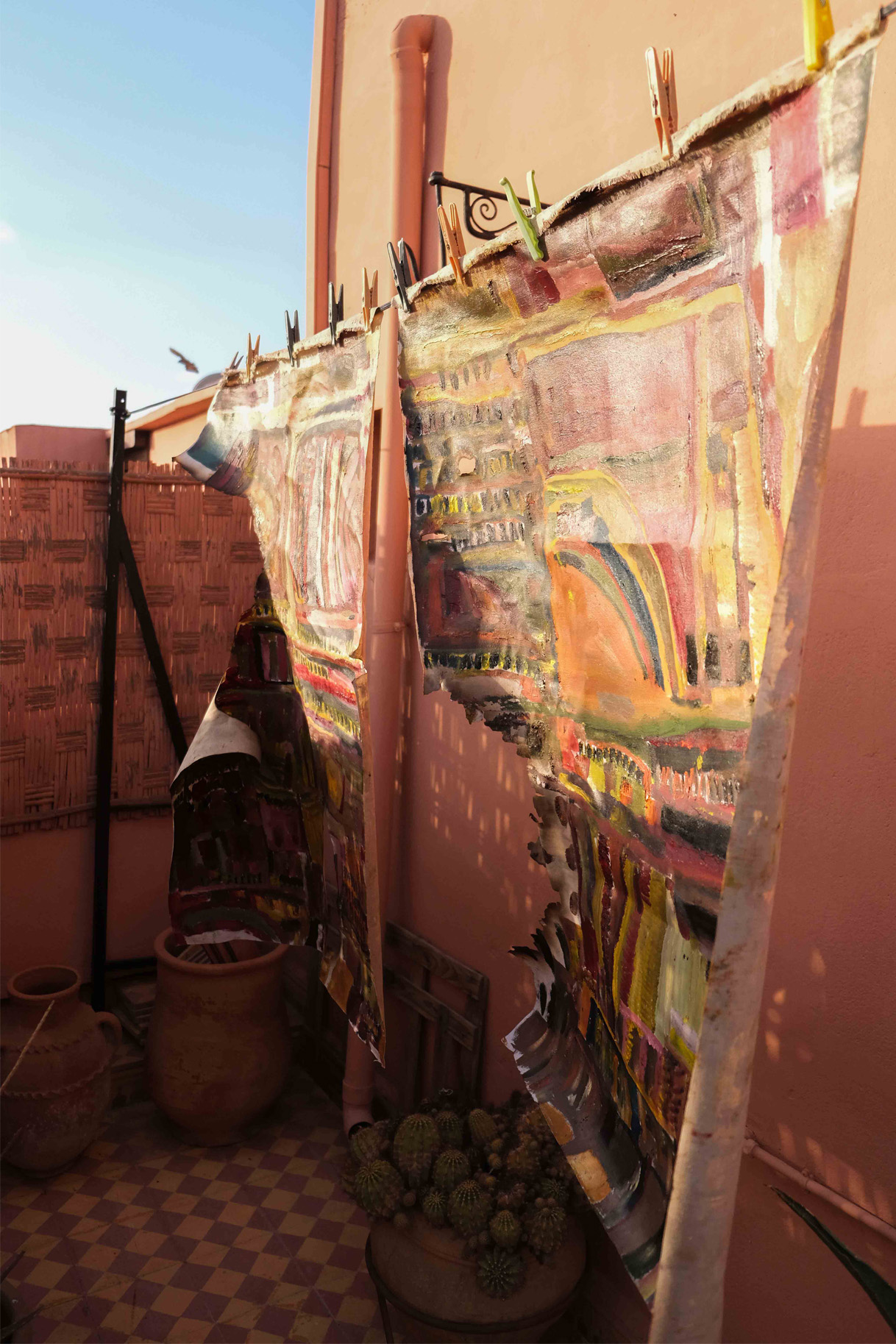
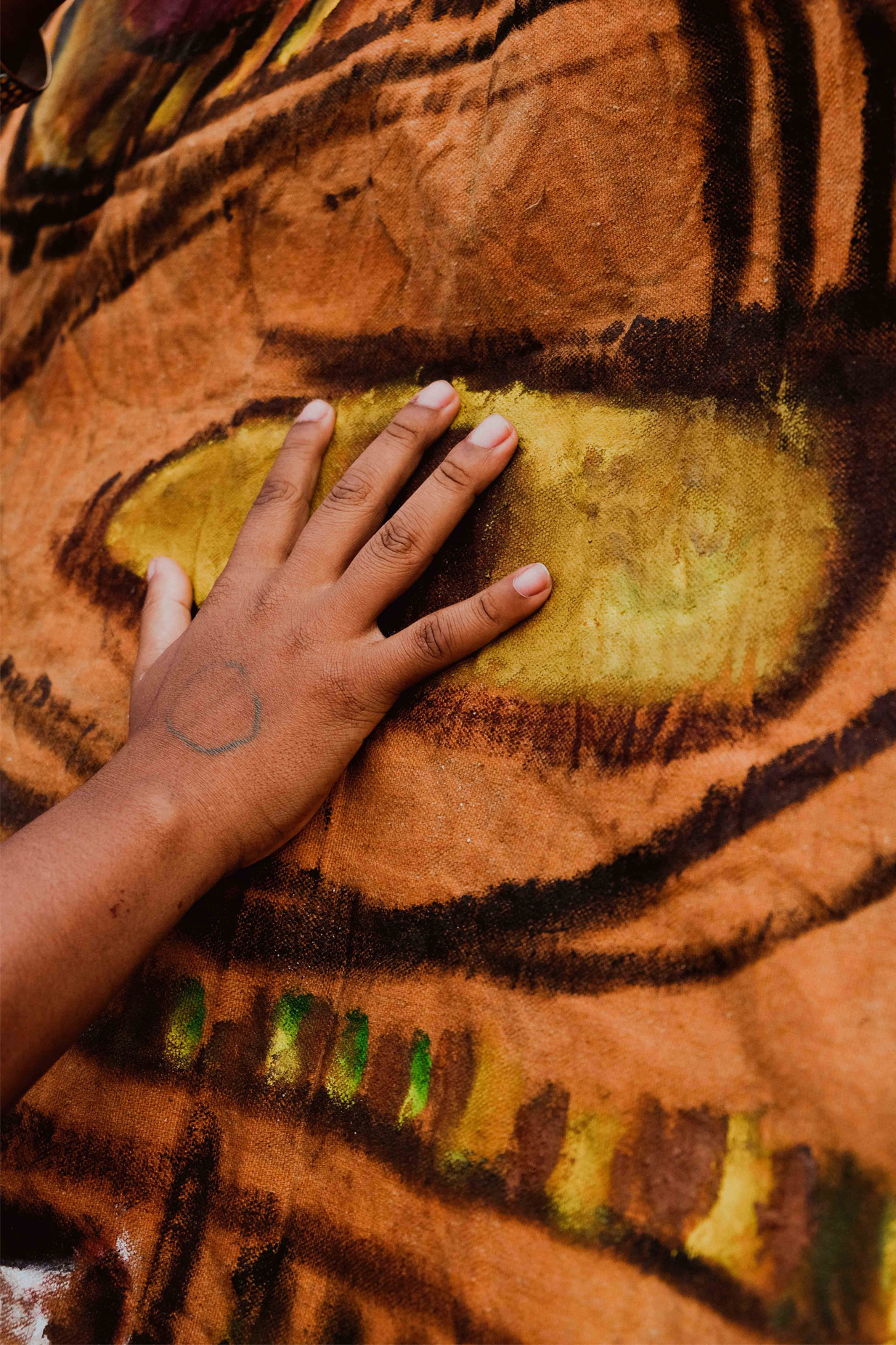
Your question is beautiful. It's wonderful to begin our conversation by evoking dreams – these very images that belong to us even when we’re not aware of them. I was born on an island in Espírito Santo, Vitória, and my community is situated at the heart of this island, on one of its highest points, Morro da Fonte Grande. To gaze out at the sea and to wait for someone to arrive or leave our lives is what we have learned to do since forever. Slowly, I am also learning to bid farewell to fears, longings, insecurities, and to await good news.
In Vitória, we experience sudden changes in temperature. Although the tropical heat of the Atlantic Forest refreshes us, leaving us humid, it's still common for the weather to shift within an hour, and rain often follows a sunny day. So, we need to adapt to this inconsistency, which occasionally affects me, making me unwell... yet, we inevitably fall in love and become a part of these rhythms of tides, to the dances between the sun and the rain.
And then one day, I woke up and felt deeply that I should live in the desert. After a few months, I understood that Morocco would be that place. Despite having studied and admired the Central African region, particularly Angola, I genuinely felt the need to carve a different path, not one based on cultural similarities, but a path that was different, new, and challenging for my repertoire. While all rational considerations told me to go to Angola, there was something strange that compelled me to defy that and head to the northern part of the continent.
Without a doubt, Islam helped me connect with the Moroccan land through its daily practice of communal prayer. Fonte Grande is a neighborhood that emerges within the embrace of the Atlantic Forest, and even today, we refer to the beginning of the area on top of the hill where the forest surrounds you, and where there are no houses for humans, as "Boca da Mata" (Mouth of the Forest). In Morocco, there are forests, lakes, snow, but we don’t see them. I was drawn to the seas of sand – they looked like waves, reminding me of the ocean. I was afraid of being engulfed and yet had the desire to enter them. Deserts are not empty places, so I prayed every day to find peace and deal better with the conflicts of my adaptation – conflicts rooted in questions of origin.
We arrived in Marrakech during Ramadan and I gradually learned about the significance of dates (fruit), water, and silence for those people. Cooking my own food every day helped me settle; I was learning to create a new ground and to choose new lives to be sown there. I think connections were formed by learning new ways to nourish myself, in every sense.
Yes, there is indeed a colonial interference in the Kalunguian experience, so to speak. I mean, the issue of the word and its translation truly exists, leading us to think of Kalunga as synonymous with death, signifying the end, in other words, sadness. In Brazil, the word survives in its post-death life force. Here, our communities understand Kalunga as a cemetery, a place for souls to rest and work. I also advocate for Kalunga as a principle of transfiguration. Kalunga is a moment of death, settling, and gestation all at once. Kalunga is an opportunity for irrevocable change, even if the concept is criminalized or demonized. Kalunga is a force of transformation. Kalunga is life in its indescribable mystery. Kalunga is life beyond words. It disrupts colonial thought, undermining the colonial cultural belief that we were born flawed. The experience announced by the word Kalunga, the force proclaimed by these letters, tears apart the history that claims that we are incapable of changing our destiny predetermined by racial violence; in other words, it breaks the curse of oblivion; it shatters the history that claims that we have no past, that we are born in sin and have deficient souls. So everything changes. Kalunga is change itself.
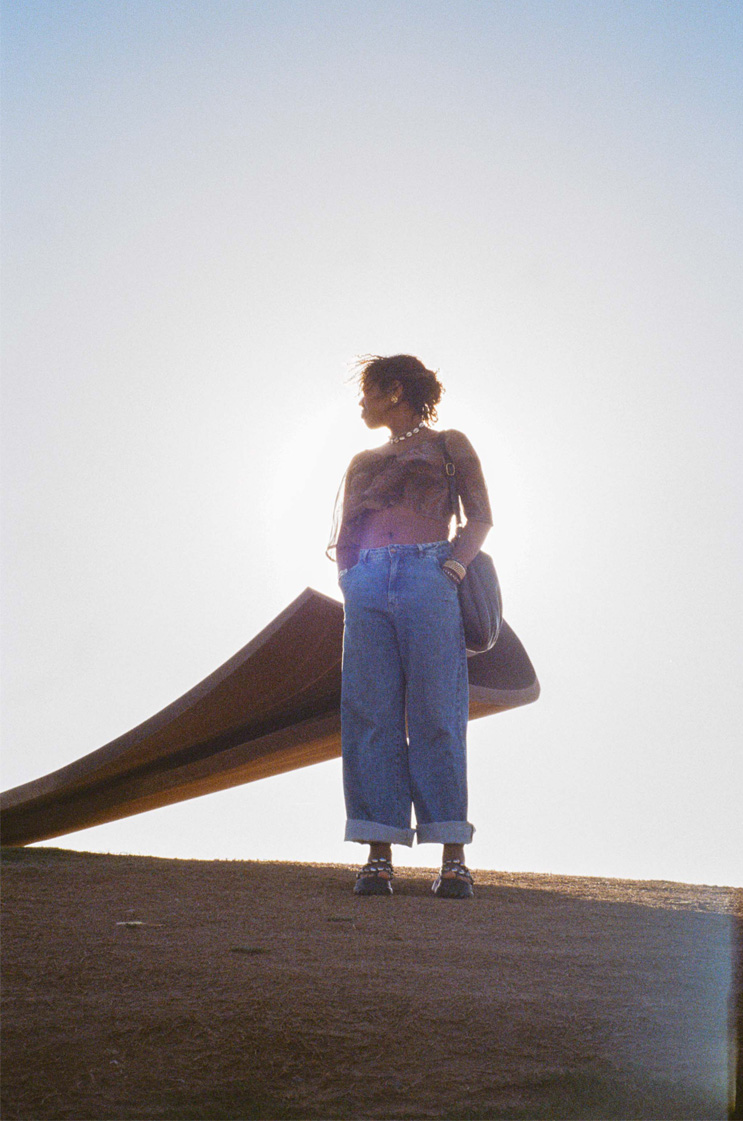
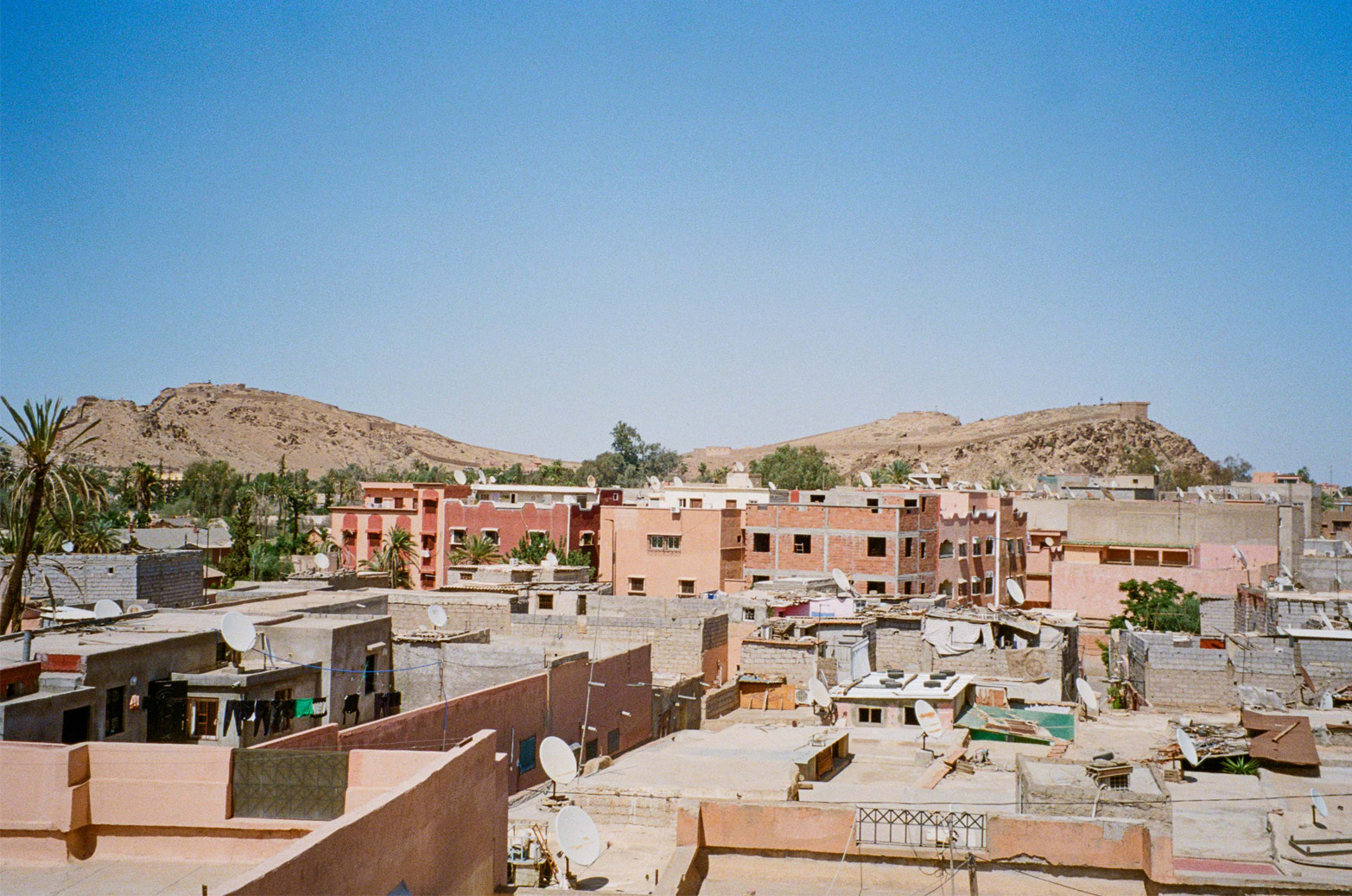
I want to become an artist capable of mastering various artistic disciplines, and I have dedicated myself to the technical study of the arts. I feel that each technique possesses a unique way of narrating a story, as if ceramics spoke from a different perspective than drawing or video, and all these perspectives are inherently valuable. I love that, the idea that there are stories I cannot convey through photography, and that I need to paint, draw, or create an installation to fulfill my desire for expression.
The Kalunga project is intended to unfold over a long period; I want to live it without being constrained by time. Kalunga also announces a temporal experience, one that is strange, difficult to describe... it's something I experience in my daily creative spaces, in the act of creating, it's strange... Right now, as I write these words, something is happening; I lose a sense of space and time; I feel present, alive; my breathing is calm, and time has already expanded. Is this a trance? Is this Kalunga? Is it medicinal, spiritual? Undoubtedly, the experience of creation is sublime, sacred, communal, and routine. Undoubtedly, this is our origin, I mean, art.
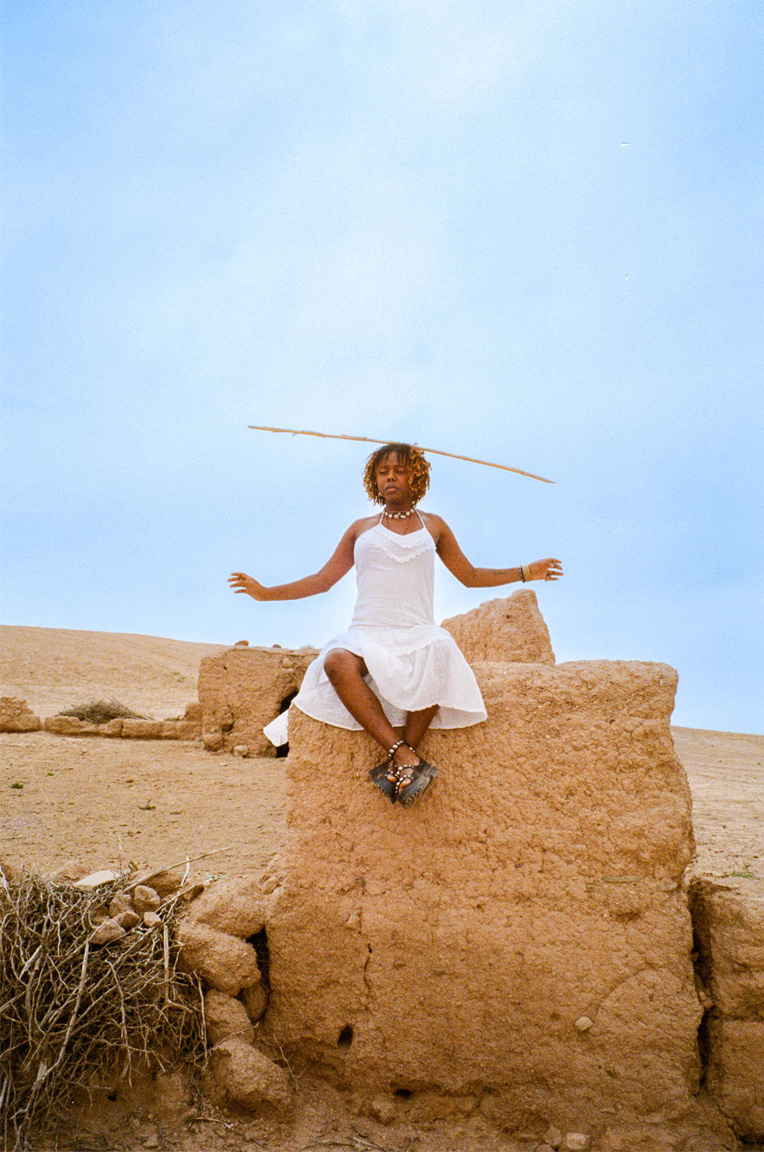
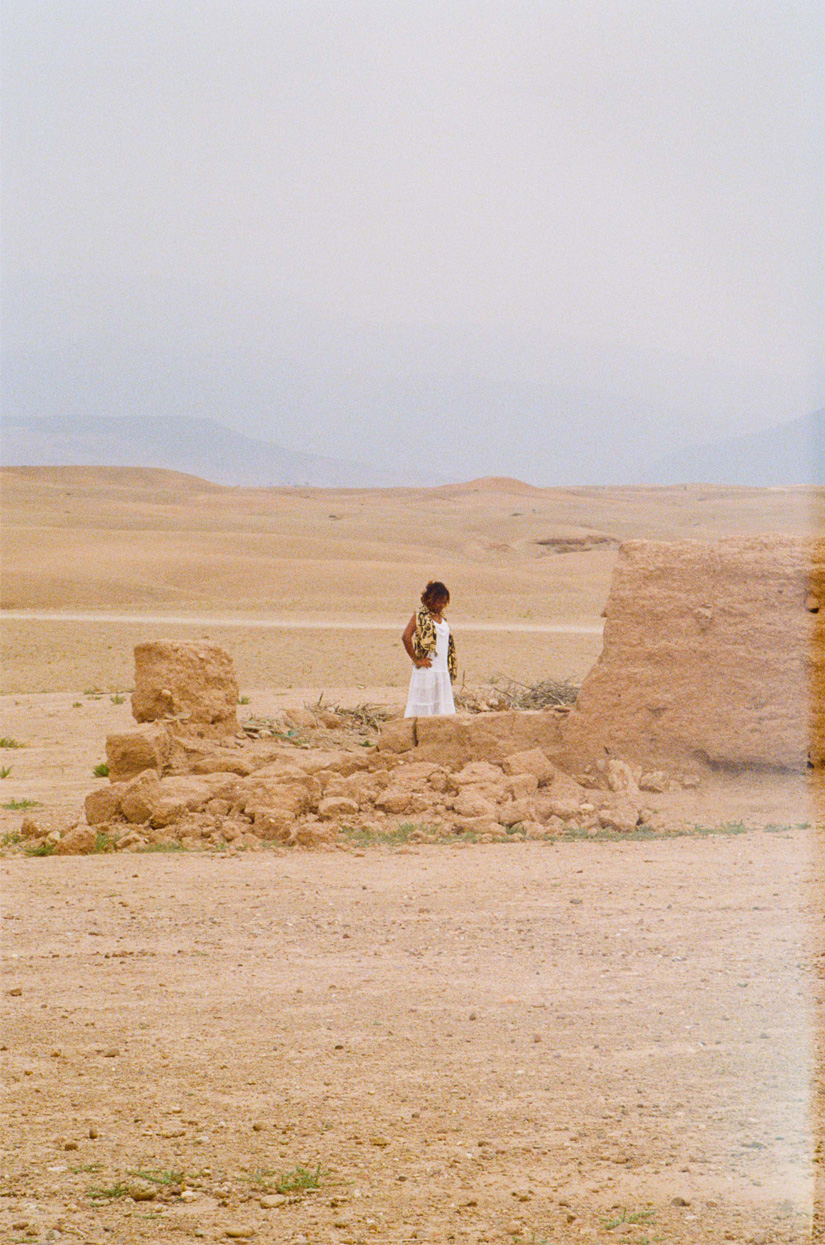
Your question is very significant; thank you for asking it. Many are aware of my connection to cultures originating from the Ndongo region, now known as Bantu cultures, and in Brazil, we also refer to them as Congo-Angolan cultures. I was born into the Brazilian diaspora of these traditions, and I'm proud of being an authentic part of this history.
Since childhood, I've engaged in various Bantu-Brazilian rites of passage. Going to Morocco and embracing Islam was one of the most paradoxical yet fulfilling decisions I've ever made. There, I knew nothing beyond English and prayer. There, I learned everything anew... I stared at the distant landscape and felt as though I could die and be reborn right there, finding happiness. I felt at ease in the Sahara, at peace in the desert's silence.
However, it was also extremely conflicting. My spiritual self encountered different medicines, and other philosophical and spiritual dilemmas. I faced scarcity, injustice, the devaluation of local currency, and the complexities of contemporary tourism. Our prayers held different supplications; our fasts aimed at different forms of survival. I learned a great deal about Islam. I devoted myself to understanding the significance of covering our bodies and started to feel the desire to move through crowds with an unquestionable presence while preserving my phenotype. This is one facet of the culture; within it also resides violence, capable of choreographing our faith...
I felt as though I were starting anew. I was recovering from depression, which offers an opportunity to change our way of living and seeing the world. It's the most challenging thing, yet it also provides the potential to transform what we are genetically destined to experience... to change!
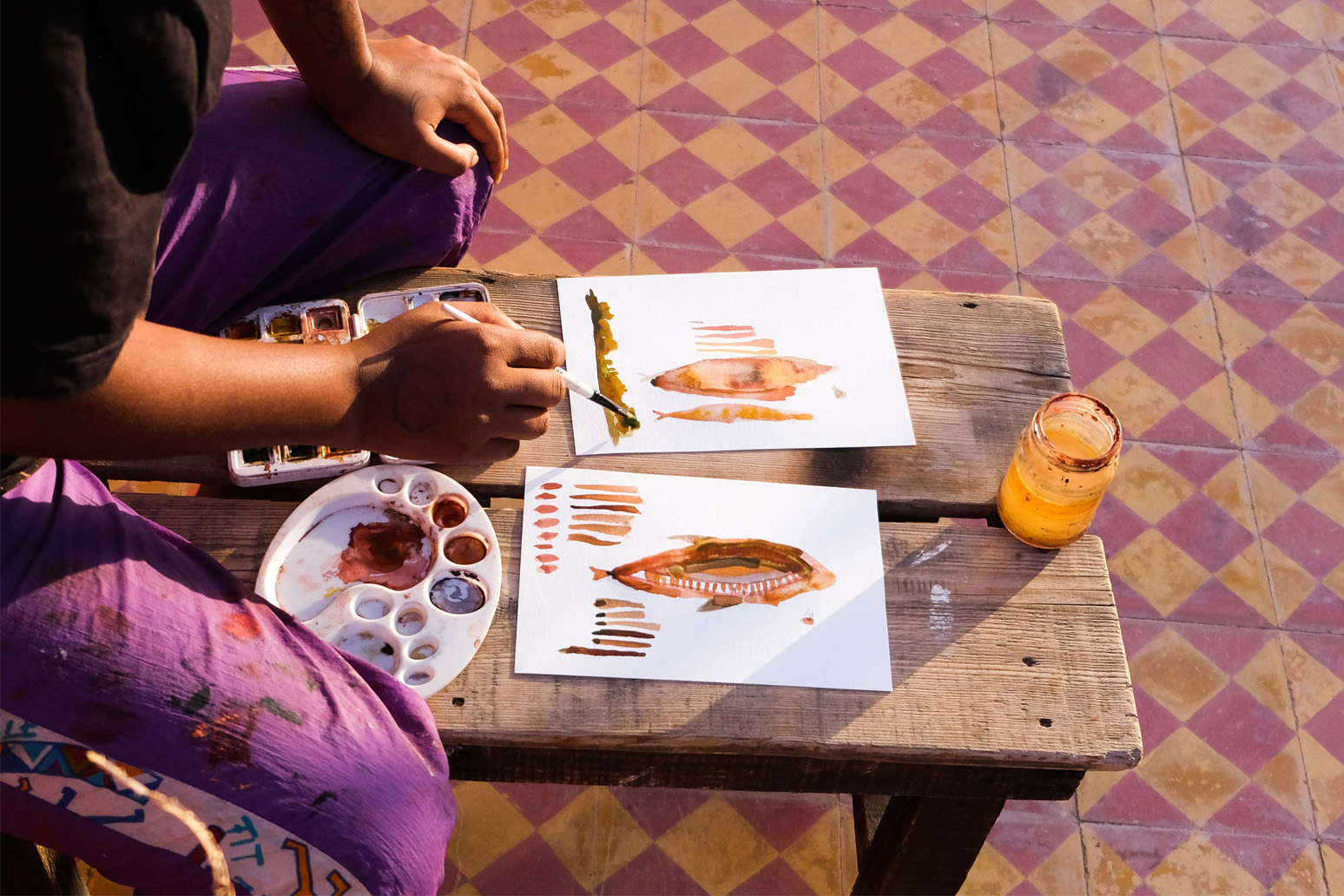
Humanity is a matter of faith, and art is our faith performing miracles. The work I created for the 35th São Paulo Biennial reflects my perspective on our planetary existence, on what is universal and essential to all peoples: fire, plants, colors, and fertility. Brazil poses a significant cultural barrier within Latin America. Among the many reasons for this, there's the political disregard for the Indigenous peoples here, and this extends to other Latin American countries.
Several indigenous connections that extended beyond Brazil were destroyed, and those that survived were hindered. I'm alluding to ancestral alliances that took the shape of forest pathways, connecting national and international territories even before nations existed, as well as other interactions stemming from nomadism. The very ancestral cultivation that gave rise to the Amazon Rainforest, something so monumental, is unfortunately often seen as insignificant, nonexistent, dirty, dangerous, and primitive.
The biggest issue isn't the fact that we don't speak Spanish; it's the violence that was inflicted earlier: the act of separation, criminalization, and the destruction of native connections. This takes me back to the topic of origin. The core problem is always our fabricated origin because that's where we lay the foundation for a new world. It's imperative to look at humanity this way, to recognize that many worlds have already ended, and origin isn't just a matter of identity tied to skin color. The history of native populations in South America predates what we know... I believe that migrations took place before what we're taught about Pedro Álvares Cabral. Speaking of Europe, it's vital to understand that the idea of European supremacy endures because we haven't studied history as we should have, failing to delve into the region’s history before the Christian invasions – including medicines, spiritualities, those known as witches, and the worldviews that precede what we know, that precede what we've grown accustomed to knowing, about Europe and the global political arrangement of the last 100 years.
We experience a unique form of colonization, distinct from other forms that happened before in human history. Land belonging and the formation of cultural groups have followed different paths, driven by different interests. We inhabit a reality that is different from our cultural and human ancestors. Our colonization directly interferes with our origin; we struggle to reflect on what happened before it all began, as it seems that everything began with European peoples setting out to save Africa from Satan.
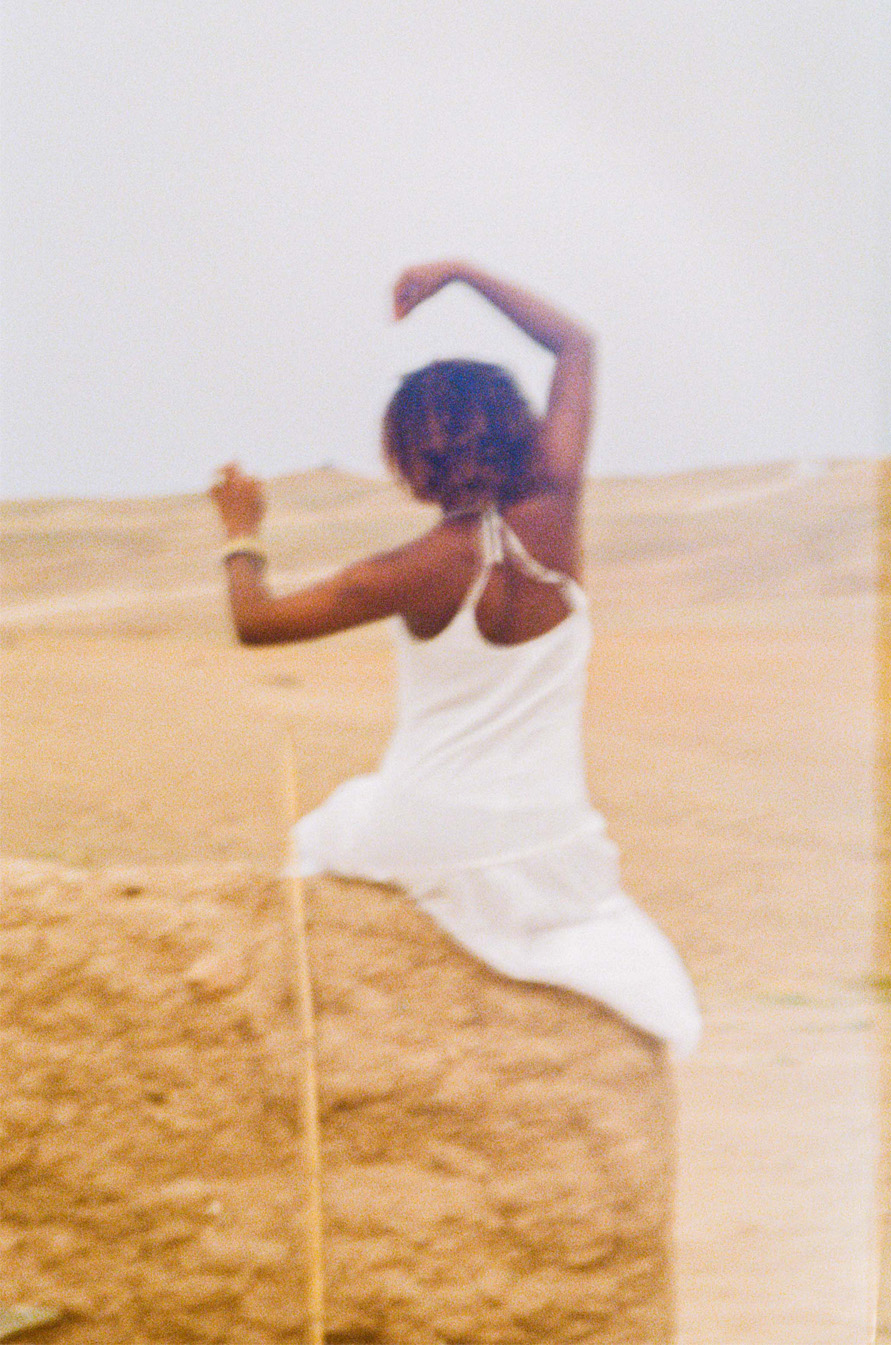
Yes, it’s possible. I’ve been experimenting with the Elementary Method since I began my psychology degree (at UFES), where I extensively explored body psychology practices and group schizoanalysis. After graduating, I continued these studies with a master's in clinical psychology at PUC-SP. So, for 8 years, I’ve dedicated myself to these clinical instances of trance, suspension, expansion, embodiment, and vibration.
My philosophical perspectives place me at a crossroads, and from this intersection of epistemic knowledge paths, many people opt to label my clinical practice as spirituality. However, I don't wish to simplify this strange equation into a single outcome; my intention is to study the elements that constitute this framework and follow their progression.
I’ve come to realize that my clinical work revolves around fundamental aspects of our lives. I design these collective therapies to engage with vital elements such as breathing, warming, cooling, communicating, nourishing, and moving. Therefore, our familiar notion of time-space is crucial; I need a secure setting to immerse myself in these dynamics. This place can be a forest, a desert, or a beach, as previously experienced. But it needs to be a secure place in material terms, precisely to enable us to transcend material reality, the same racial material reality that generates so much anxiety, delusion, psychosis, anguish, muscle pain, madness, longing, and fear.
Breathing is a gift; based on this, I create a repertoire of exercises, which is the Elementary Method, in order to generate a collective force, a vibration. To breathe. To dive. To sense the dissolution of traumas. To submerge. To gaze by the seashore. To feel the wind caressing our skin and the warmth of the sun turning into tears. To shed tears. To keep breathing deeply and allowing peace to permeate our spirit and thoughts, and to transform our intuition. This is the Elementary Method.
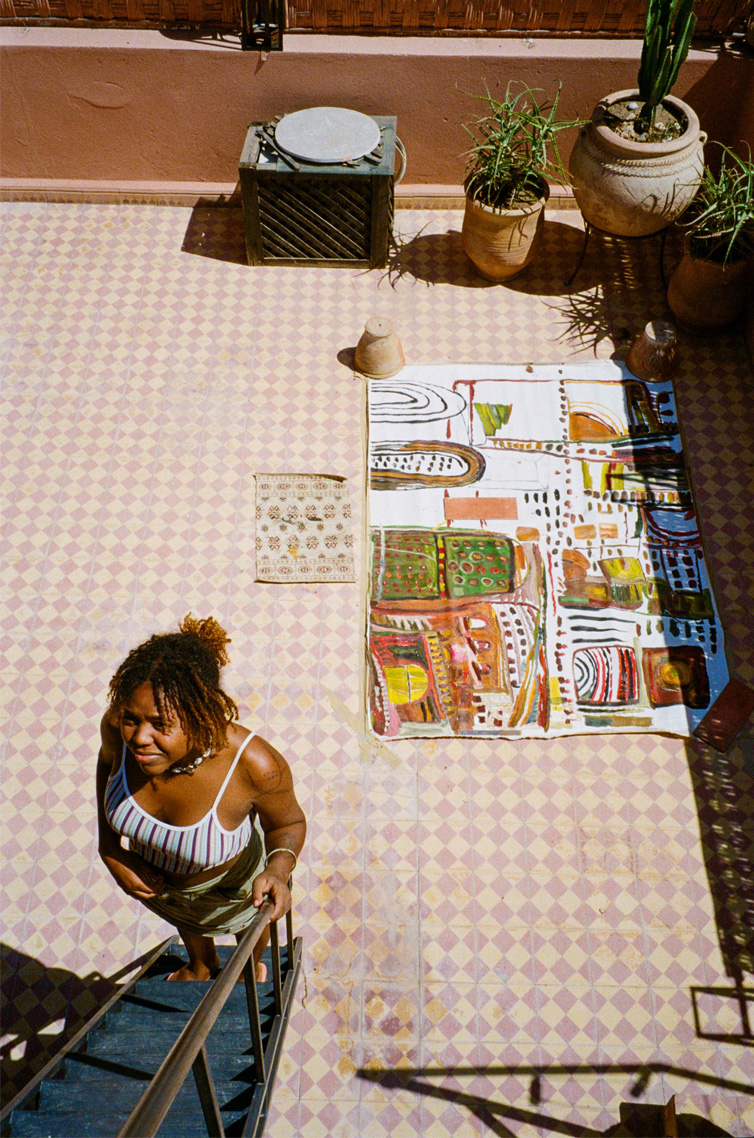
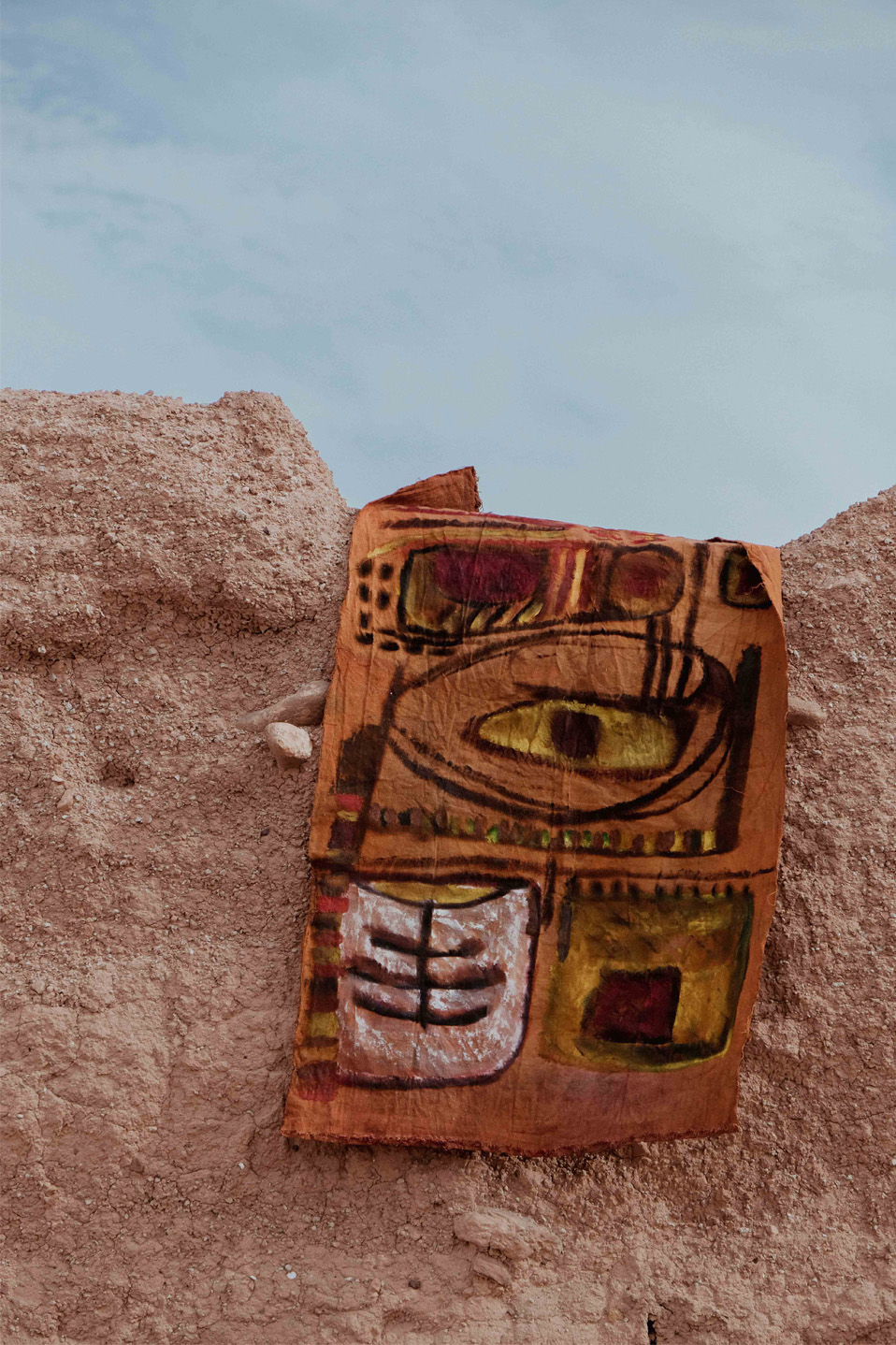
Quitembo and Time have been great sources of support on my journey, and I’m forever grateful for these forces, knowing that they are also very fond of me. This work is a way of expressing gratitude to the inquice and the orisha, who are responsible for the seasons, waiting, and arrival – mysterious forces that I can't describe well. But I can talk about what they do in my life... the time of things concluding, the time of things returning, the time required for understanding, learning, teaching, and loving... a time that feels strange, a time that brings nostalgia... encompassing the past, the present, and the future; the time where everything merges into one. I find this awe-inspiring, majestic!
It’s crucial to talk about temporalities right now because we often need to step out of a temporal rhythm to comprehend life's message, particularly in our neoliberal context where everything is moving so fast. We're living in such an anxious and fleeting time.
The three chapters are interconnected; I'm trying to merge the temporal histories of the three institutions, experimenting with different trees that make sense within each context. It is as if I were creating a forest for each institution I'm collaborating with and also establishing portals between them.
At Serpentine, we used willow trees; at Mendes Wood, we incorporated ipê, sibipiruna, araucaria, and grevillea… and at Tomie Ohtake, I'm working with eucalyptus logs. Each of these trees possesses its own consciousness and a history intertwined with humanity, including its medicinal, popular, and mysterious uses. Trees outlive us; they bear witness to our births and deaths; they are capable of recounting our lives to others. I enjoy contemplating the consciousness of plants and how they are our fundamental ancestors.
The use of plants is complex, much like their existence. Take, for instance, the eucalyptus monoculture, which is responsible for the suffering endured by so many Indigenous communities in Brazil. This is an issue that affects us on multiple levels, making us reflect on our responsibility when it comes to manipulating existing life forms.
At Tomie Ohtake, the audience will have the first opportunity to enter the forest of time – something I’m very excited about. Being able to pause the day and spend time within the artwork can offer a restful vibrational experience, something I seek in my spiritual practice. I feel that all my spiritual discipline is a journey to attain inner peace, and these works dedicated to Time and Quitembo encapsulate this desire to provide moments of peace to others.
I love X-Men! An odd fact, I admit! Ever since I was young, I've always pictured myself in a school like that, designed for individuals with special gifts that are often ridiculed by society. These individuals usually possess incredible methods of learning and teaching. With this new project, I want to create opportunities for us to learn about science, medicine, arts, spirituality, in different ways. In my own academic journey, I've often encountered criticism from teachers who have said that my thinking is too fast. I've learned not to suppress this aspect of myself but rather refine it. My intention is to establish a space for exchange, interconnection, and rest as well. I believe that the time has come to turn this place into reality! My own institute.